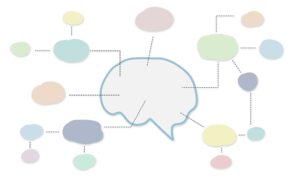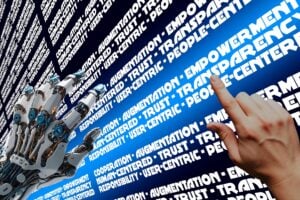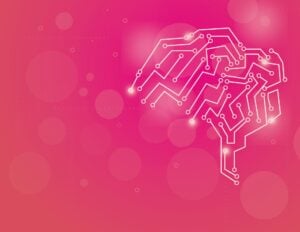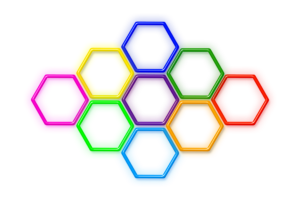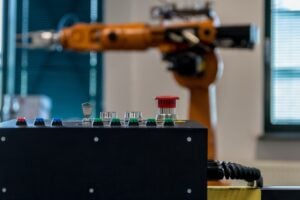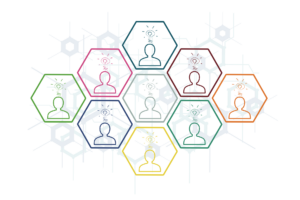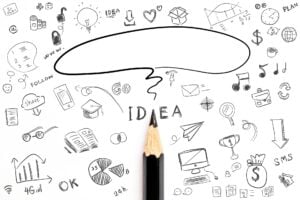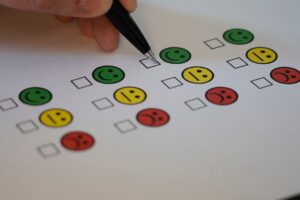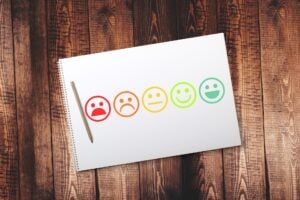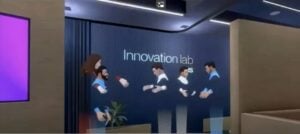KEY QUOTES
- “This whole shift to consumer centricity means a few different things… every innovation that we put into our innovation pipeline has to have a consumer need or a consumer intention that it’s answering, and that consumer need or intention also has to align with our business strategy.”
- “There’s no such thing as a boring category. There’s just boring execution.”
- “Product communication doesn’t happen after the work—it is the work.”
- “The only edge that your rivals can’t copy is an architected customer journey that compounds value and differentiation across moments.”
- “Human obsession and understanding the real problem to solve is the only way that you’ll commercialize excellent product and product execution.”
Full Track Summary: Strategy & Transformation
The Strategy & Transformation Track at FEI25 provided a multifaceted exploration of how organizations can effectively align innovation with business strategy to drive sustainable growth. Across multiple sessions, speakers from leading companies like Lagunitas, PepsiCo, and Procter & Gamble, along with innovation experts, shared insights on consumer-centricity, emotional innovation, effective communication, and organizational design.
Delivering on an Integrated Innovation Strategy: A P&G Case Study
Procter & Gamble’s R&D strategy highlights the challenge of managing both sustaining innovation (optimizing current products) and disruptive/discontinuous innovation (new products, business models). Liza Sanchez explained that these require different organizational structures, leadership behaviors, and metrics. P&G allocates 70-80% of resources to sustaining innovation and 20-30% to transformational innovation, emphasizing the need to protect resources for future-focused work. Transformational innovation requires managing uncertainty and embracing experimentation, contrasting with sustaining innovation’s focus on risk management and process. P&G’s consumer-centric approach leverages core competencies across business units to create “irresistible superiority,” testing complete propositions early in the innovation funnel.
Designing Innovation with Human-Centered Approaches and AI
PepsiCo Design’s approach to innovation is deeply human-centered, focusing on defining the right problems to solve, embracing talent, and championing integration. Their methodology employs a “double diamond” approach with four key lenses: feasibility, viability, sustainability, and desirability, ensuring early connection with the broader organization to build trust. PepsiCo is also heavily leveraging AI to enhance design innovation, using tools like ChatGPT and Adobe Firefly for storyboarding, journey mapping, and customer engagement. Examples like the Bear snacks expansion and Wing drone delivery demonstrated how design drives both short-term and long-term innovation by exploring new categories and emerging distribution models.
Activating Emotional Innovation and Redefining Value
Another critical aspect of innovation discussed was the emphasis on “emotional innovation” over technical innovation alone. The speaker, who created successful brands like Method, EOS, Hello, and Happy Coffee, argued that “there’s no such thing as a boring category, just boring execution”. True innovation, he posited, comes from creating products that connect with people’s hearts and are “as endearing as they are enduring”—products people would genuinely miss if they disappeared. This approach shifts the focus from disruption to delighting consumers, with disruption being a byproduct of that delight. The concept of “responsibility” was highlighted as more meaningful than corporate “purpose” or “mission,” exemplified by Happy Coffee’s partnership with NAMI, which included giving NAMI an ownership stake in the company. This perspective encourages brands to focus on people, not just “consumers” or “targets,” and to recognize that “ideals are important and there’s margin in meaning.”
Why Stories, Not Just Science, Should Start in the Lab
The session “Why Stories, Not Just Science, Should Start in the Lab” emphasized that product communication should be developed simultaneously with product innovation, not as an afterthought. Most innovations fail due to poor storytelling rather than poor product quality, as “people don’t buy the best products; they buy the products that they understand the fastest”. The “Who, How, Wow” framework was introduced to help innovators distill complex scientific concepts into compelling, three-second “wow” moments. This framework encourages identifying the target audience and their problem (“Who”), explaining the science simply (“How”), and articulating the transformative result (“Wow”). Early cross-functional collaboration, termed “Wow Workshops,” brings together teams like marketing, R&D, and legal to develop the product story alongside the product itself, ensuring alignment and preventing “phantom work.”
Killing “Me Too” Innovation
To combat “me too” innovation, a four-move strategic framework was presented: developing critical insights, embracing iteration, mapping customer journeys, and enhancing value through experience. Critical insights go beyond surface-level trends and require personal engagement, listening to the right people, building trust, trading quantity for understanding, and including live observation. Iteration is crucial for refining these insights before scaling. Mapping the customer journey—identifying all touchpoints from awareness to repurchase—helps create a competitive advantage that rivals cannot easily copy by enabling unique business decisions and an integrated system. Finally, enhancing value by adding “Experience” alongside Price and Quality transforms transactions into loyalty and enables higher margins.
Navigating Disruption
The “Navigating Disruption” workshop introduced “constrained consumption” as a new economic context shaped by three emerging consumer trends: the Appetite Edit (GLP-1 drugs’ impact beyond food), Money Maxing (economic uncertainty driving value redefinition), and Buycott (values-based shopping). These trends fundamentally alter consumer behaviors, from reduced impulse purchasing to increased financial literacy and values-driven buying decisions. Businesses must pivot from promoting instant gratification to emphasizing purposeful pleasure, delayed gratification, and aligning with consumer values.
Brewing Innovation Through Consumer Centricity and Strategic Patience
Lagunitas has significantly transformed its innovation approach by becoming truly consumer-centric, ensuring every new product addresses a specific consumer need while aligning with their business strategy. The company categorizes innovations into “big bets” (within core beer expertise) and “future bets” (stretch products that may take up to 10 years to fully develop). Both categories undergo rigorous testing, but future bets are given extended time to develop and prove themselves in the market, recognizing that successful brands often require significant time to gain traction. Lagunitas uses its taproom as an initial testing ground, and successful offerings sometimes become commercial products. Despite being owned by Heineken, Lagunitas maintains its distinct brand identity by focusing on quality products and understanding different consumer demand moments, exploring growth areas like non-alcoholic beverages while staying true to their craft brewing roots. Quality is seen as a key differentiator in a crowded market.
KEY TAKEAWAYS
- Consumer-Centricity is Paramount: Every innovation must address a specific consumer need or intention and align with business strategy, moving beyond chasing trends to truly understanding and meeting consumer desires.
- Emotional Connection Drives Success: True innovation stems from emotional resonance; products that delight and connect with people’s hearts are more likely to be endearing, enduring, and ultimately successful.
- Communication is Integral to Innovation: Product communication should be developed alongside the product itself, distilling complex concepts into clear, compelling “three-second wow” moments that ensure rapid consumer understanding and market traction.
- Strategic Differentiation via Experience & Iteration: To avoid “me too” innovation, companies must develop deep, critical insights, embrace iterative development, map comprehensive customer journeys, and enhance value through unique experiences beyond just price and quality.
- Dual Innovation Structures are Essential: Organizations must adopt separate but connected structures for sustaining (incremental) and transformational (disruptive) innovation, with distinct cultures, metrics, and leadership behaviors, while deliberately protecting resources for future-focused initiatives.
How This Track Delivers on the Event Focus:
Aligning Innovation with Business Strategy:
The Strategy & Transformation Track at FEI25 directly addressed aligning innovation with business strategy by providing actionable frameworks and real-world examples. Sessions emphasized that effective innovation is not merely about creating new products but ensuring these products meet specific consumer needs while contributing to overarching business goals and growth. Speakers detailed how strategic patience, understanding demand moments, and leveraging core competencies are crucial for commercial viability. The track demonstrated how emotional innovation drives market success and how early product communication aligns R&D with marketing to create commercially viable products. Furthermore, it highlighted the necessity of organizational structures that support both sustaining and transformational innovation, linking R&D strategy to overall business objectives and long-term portfolio management.
How This Session Delivers on the Event Theme:
Harvesting Innovation & Sowing Seeds of Future Growth:
The track embodied the theme of “harvesting innovation and sowing seeds of future growth” by presenting strategies for both extracting immediate value from existing innovations and cultivating new opportunities for the future. Concepts like “big bets” (harvesting core expertise) and “future bets” (sowing seeds for long-term development) illustrated this duality. The emphasis on giving experimental products up to 10 years to develop demonstrated a commitment to nurturing innovation for sustainable growth rather than expecting immediate returns. The sessions showed how harvesting deep customer insights from current conditions can fuel differentiated innovations, while exploring emerging trends like “constrained consumption” and investing in new technologies like AI or drone delivery represent sowing seeds for future market relevance and growth. P&G’s model of allocating resources to both sustaining and transformational innovation further reinforced the importance of balancing immediate returns with long-term growth through deliberate portfolio management.
Action Items for Innovation Experts and Corporate Changemakers:
- Implement Consumer-Centric Filters: Create clear criteria for all innovation ideas, requiring them to address specific consumer needs and align with business strategy. Conduct deep, qualitative research and direct observation to gain critical insights beyond surface-level trends or AI-generated data.
- Develop a Two-Track Innovation System: Establish separate but connected organizational structures for “big bets” (sustaining, core business extensions) and “future bets” (experimental ventures), with distinct timelines, metrics, leadership behaviors, and protected resources for each.
- Integrate Product Communication Early: Conduct “Wow Workshops” early in the innovation process, bringing together cross-functional teams (R&D, marketing, legal) to align on the product story and develop the “Who, How, Wow” communication framework simultaneously with product development.
- Prioritize Emotional Design and Experience: Reframe innovation by asking how products make people feel, focusing on creating emotional connections and building enduring brands. Map the entire customer journey to identify and design differentiated experiences that transform transactions into loyalty, expanding the value equation beyond just price and quality.
- Embrace Iteration and Test Early: Restructure innovation processes to include multiple rounds of exploration, agile market learning, and agile product testing, allowing insights to evolve and deepen before scaling. Leverage existing assets like company taprooms or pilot programs for real-world testing of complete propositions (technical, commercial, organizational).
Contributor
-
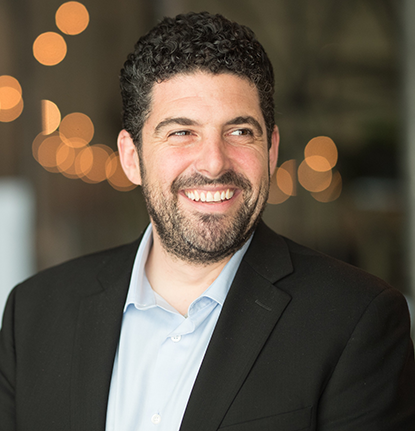
Seth Adler heads up All Things Insights & All Things Innovation. He has spent his career bringing people together around content. He has a dynamic background producing events, podcasts, video, and the written word.
View all posts








